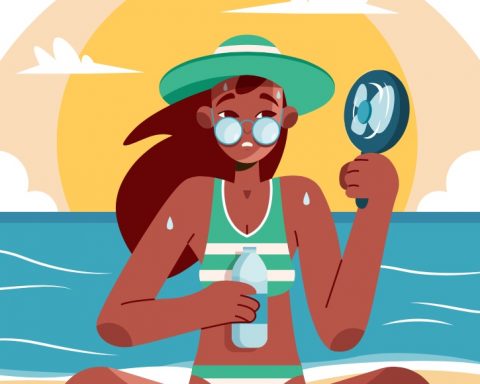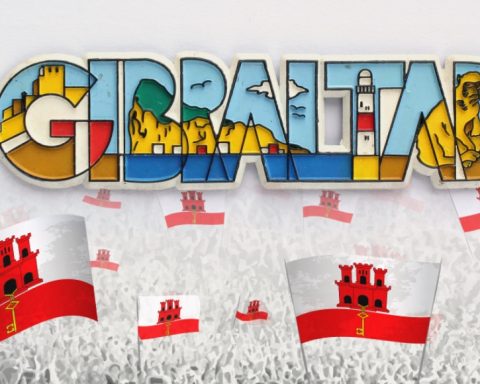Apart from great beaches, a wonderful climate and a wealth of culture and history, the Balearic Islands offer a whole host of attractions for those looking for a destination with a difference. There’s something for everyone, from families looking for relaxing beach holidays to true sports enthusiasts with a wide range of activities for walkers, cyclists and divers.
The Balearic Islands are part of an archipelago located in the Mediterranean Sea lying off the eastern coast of mainland Spain. They consist of four main islands, Mallorca, Ibiza, Menorca, and Formentera, with over one hundred smaller islets.
If you want to avoid the crowds, the best months to visit the Balearics are May, June, and September. If you’re not flying in from the UK or other far off climes, the best way to get to the islands from Gibraltar is via Spain with local airlines in Barcelona and Madrid offering daily flights to Ibiza, Menorca, and Palma de Mallorca Airport and from Malaga to Mallorca and Ibiza. If you don’t want to fly, you can go via car ferry with some major ferry carriers offering various overnight routes that connect mainland cities like Barcelona, Valencia, and Dénia to the islands, many of which operate every day. If you want to island-hop, ferries run daily between the four main isles.
Mallorca, the largest of the islands, is the favoured destination for some of the many celebrities who either own homes there or for the rich and famous who enjoy following in the footsteps of royalty. This is where the Spanish Royal Family spend their holidays in August at the Marivent Palace on the outskirts of Palma and is where Grace Kelly and Prince Rainier III kicked off their honeymoon cruise in 1956.
Hiring a car or using your own makes exploring the island an easy option, but public transport is also available. From west to east, Mallorca is 100 kilometres wide and around 75 kilometres from north to south.
Palma is the capital and home to one of the most beautiful cathedrals that I have visited. The 14th century Cathedral of Santa Maria, more commonly referred to as La Seu, is one of Europe’s tallest Gothic structures and features sixty-one stained-glass windows, the most spectacular being the central rose window. Make sure to take in Miquel Barceló’s contemporary installation in the right-hand apse of Saint Peter’s Chapel. Next to La Seu stands the Royal Palace of La Almudaina, which dates back to the 14th century, the official residence of the Royal Family in Mallorca. Both these buildings sit on top of a hill affording magnificent views over the Mediterranean.
If you want to head outside the capital, a trip on the Tren de Sóller is a must. This narrow gauge railway line opened in 1912. The train, made up of mahogany lined vintage carriages with wooden seats and large windows allowing passengers great views of the stunning scenery, departs from its own station in Palma, Plaça de l’Estació. The train journey takes approximately 40 minutes and covers a distance of around 25 kilometre. There is one stop at Bunyola before the train arrives at the Art Deco station in Sóller, from where you can jump on the tram to explore Port de Sóller.
Other must-see places in Mallorca include: Petra, famous for being the birthplace of Friar Fray Junipero Serra who founded the first Spanish mission in California; Alcúdia the former Roman capital of the Balearic Islands; and the Cap de Formentor peninsula situated at the north-eastern tip of the island which is accessed via 18km of winding roads and hairpin bends. This is where you can visit the Far de Formentor lighthouse built in 1863, at an elevation of 119m above the sea level.
Mallorca’s smaller sister island Menorca has been a Unesco Biosphere Reserve for nearly three decades. While it only measures around 30 miles from west to east, the island has more than 125 miles of coastline, and with its breath-taking white sandy coves and incredible turquoise waters it is the perfect place for leisurely beach holidays. There are plenty of small fishing villages where you can sample the local cuisine, including a traditional lobster stew (caldereta de langosta).
The port of Mahón is the second largest natural port in the Mediterranean. It has been a key port on trade routes since it was first used in the 3rd century B.C. and because of the city’s deep harbour and strategic position in the Mediterranean, the British dominated the island for much of the 18th. Pay a visit to the Xoriguer gin distillery to sample some of the world-renowned Mahón gin and then if you can find your sea legs take a trip around the harbour on one of the many boat trips and find out more about the naval history.
At the western end of the island is the old town of Ciutadella, the ancient capital which lives up to its nickname of Vella i Bella, (old and beautiful). We stayed in one of the many burgeoning boutique hotels and wandered the narrow cobbled streets, stopping for coffee in plazas and soaking up the atmosphere in the Main Square, Plaça des Born, bordered by architecturally interesting buildings such as the neoclassical Palau Torre-Saura and fortress-like Ajuntament which sits opposite the Santa Maria Church, built in the 13th century on the site of an old mosque. In the centre of the square is the twenty two metre high obelisk dating from the 19th century which commemorates the resistance and final defeat of the city at the hands of the Turks in 1558.
Ibiza, known as the nightlife destination of the Balearic Islands and for its hedonistic clubbing scene is frequented by world-famous DJs and celebrities, but it has much more to it than just party vibes. The island is a great place for family holidays. If you want to get away from the crowded resorts, check out the southwest coast which has some of the most beautiful sandy coves on the island where there is plenty of opportunity for snorkelling or kayaking.
Ibiza’s old town called Dalt Vila, “the city from above”, is a UNESCO World Heritage Site containing museums, medieval houses and narrow streets. In the west of the island is the resort of San Antonio which may be synonymous with the nightlife scene, but travel 25 kilometres north to visit Can Marçà, a cave discovered by groups of smugglers who used it to hide their contraband. Since the 1980s the cave has become one of the island’s major tourist attractions.
A short boat ride from the glitz of Ibiza lies the small island of Formentera, just 20 km long and at the most narrow point 2 km wide. This idyll is very different to the other islands, with a bohemian vibe that still resonates from the 1960s hippy days. This is the island to come to if you want to experience a relaxed, laid-back holiday. Although the smallest of the islands, Formentera has a lot to offer, with highlights including unbeatable pristine beaches and delicious fresh seafood available at the island’s restaurants and chiringuitos. Birdwatchers should visit the Ses Salines Natural Park, one of the most important marine and land reserves located to the north of Formentera. The natural park is an example of the richness of Mediterranean biodiversity and is a stopover and nesting area for migrating birds.
The Posidonia meadow of Ses Salines is considered the biggest and oldest living organism in the world, at 15 kilometers in size and 80,000 years old. It is thanks to the presence of the Posidonia Oceanica, an underwater grass, that the waters around the island are so crystal clear. The Posidonia meadow is so vital that it was declared a World Heritage Site in 1999.
If you’re feeling adventurous, take a boat trip and explore the caves of Punta Rasa which can only be accessed by sea. If diving is your thing, or maybe something that you’ve always wanted to try, then the island is the perfect place to start with the sea reaching summer temperatures of around 25ºC. If you’d rather not go quite so deep, Formentera is a fantastic environment for snorkelling and the rocky cove of Es Caló des Mort, although popular and sometimes crowded, is the perfect place to try this sport.









